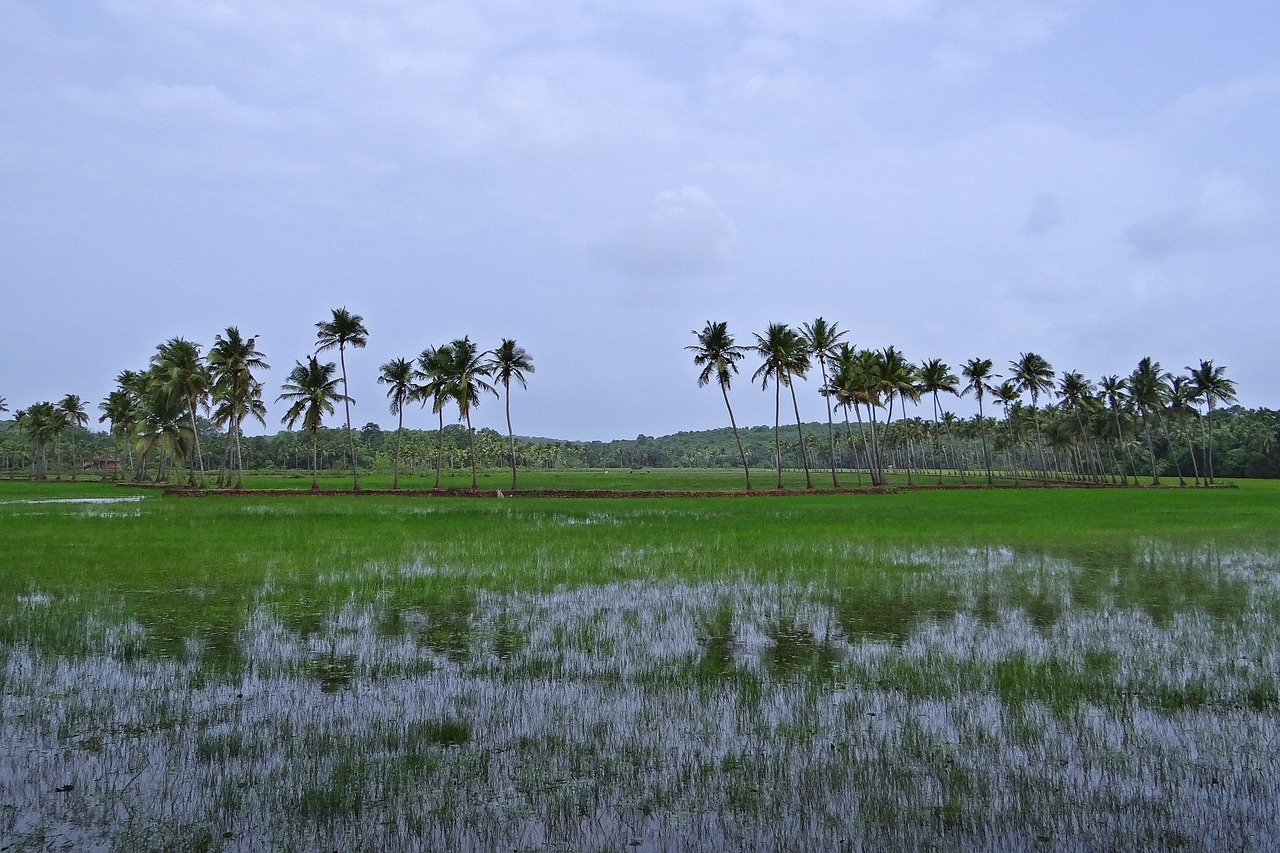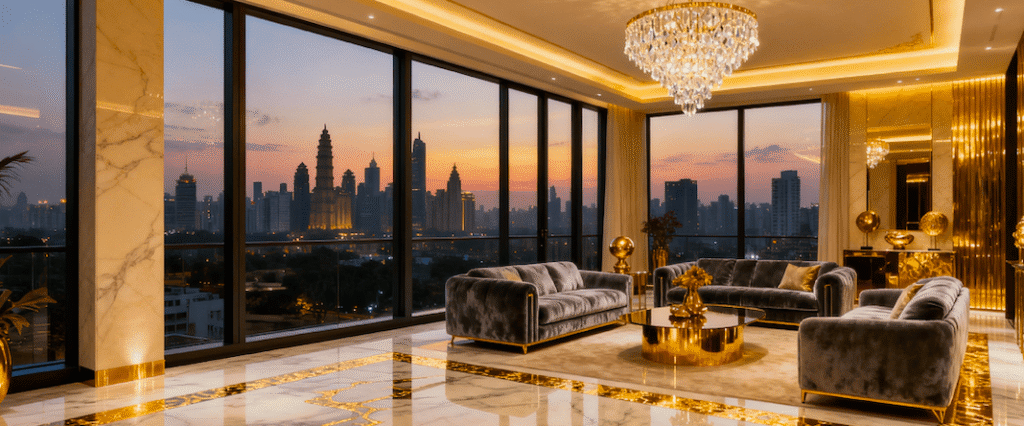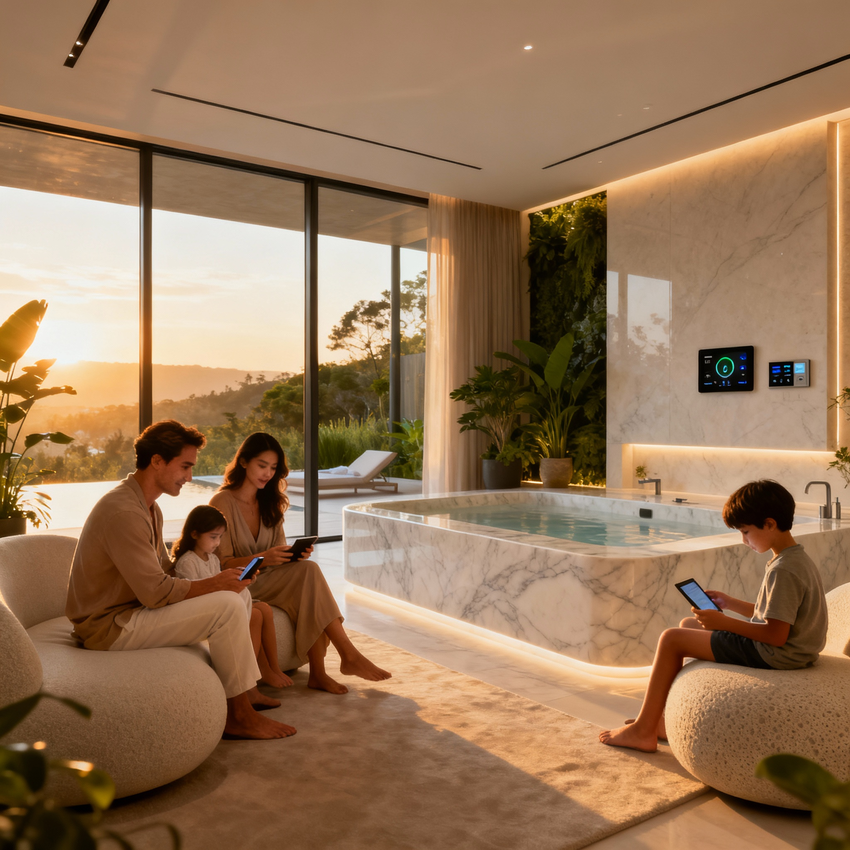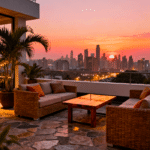Now Reading: Goa Real Estate 2025: Why India’s Wealthiest Are Betting Big on Coastal Living
- 01
Goa Real Estate 2025: Why India’s Wealthiest Are Betting Big on Coastal Living
Goa Real Estate 2025: Why India’s Wealthiest Are Betting Big on Coastal Living

The Dream v/s The Reality
Picture this: You’re sitting on your villa’s terrace in North Goa, sipping espresso as fishing boats drift past at dawn. Sounds perfect, right?
The reality of Goa real estate is more nuanced. While some villas market “beach access,” true private beaches are rare in Goa due to Coastal Regulation Zone (CRZ) rules. Properties must maintain a 500-meter setback from the shoreline, meaning your villa won’t be literally on the sand. However, what is possible—and increasingly popular—are proximity villas with easy beach walks (10-15 minutes), sea views, and that intoxicating coastal lifestyle without the legal headaches.
This distinction matters because it separates marketing fantasy from investable reality. And savvy investors are discovering that Goa’s emerging real estate market isn’t about owning the beach—it’s about owning a lifestyle that works.
Why Goa, Why Now?
Three years ago, Rajesh K. was stuck in a Mumbai penthouse, staring at traffic below. A successful IT founder with ₹85 crores in net worth, he had everything except peace. Then he bought a villa in Assagao.
“It wasn’t the property itself,” he recalls. “It was the freedom. I could work from the balcony, invite friends for weekends, and actually rest.”
Rajesh’s story repeats across Goa’s property market. Between 2020 and 2025, ultra-wealthy Indians and NRIs discovered something that Dubai already knew: you can build generational wealth while actually enjoying your life.
Unlike Mumbai apartments (which yield 2-4% rental income) or sterile Dubai penthouses, Goa offers a third way: capital appreciation (12-15% annually in prime areas) + genuine lifestyle value + tourism-driven rental income.
The Infrastructure Moment
The Mopa International Airport opening in December 2022 changed everything. The recently completed NH-166S highway cut drive times in half.
Property values near the airport corridor soared. Not because of hype, but because accessibility moved from inconvenient to manageable. Wealthy Mumbai professionals could now realistically spend 2-3 weekends per month in Goa.
“Mopa was the inflection point,” says a property analyst tracking the market. “Suddenly, Goa became viable for the executive crowd, not just holidaymakers.”

The Real Numbers (Without The Marketing Fluff)
Let’s be honest: the 8-12% rental yield claims flying around are mostly myth.
Here’s What Actually Happens
You buy a ₹4 crore villa in Assagao. On paper, if it generates ₹40 lakhs annually, that’s 10% yield. Sounds great!
But reality:
- Professional property management: 20-25% of gross income
- Maintenance, utilities, staff: 5-7%
- Seasonal vacancy (especially monsoon): 50-60% occupancy average
- Furnishings & equipment replacement: 2-3% annually
Net result: You’re looking at 1.5-2.5% net rental yield, not 10%.
However—and this is crucial—you also get capital appreciation. A villa purchased for ₹4 crore in 2023 could be worth ₹5.2 crores today (30% gain). Add the rental income, and your total blended return sits at 8-10% annually.
That’s still better than Mumbai (3-6% total) or Bangalore (4-7% total), but it’s important to understand the composition.
The Airbnb Reality
Some investors chase Airbnb returns. The median Goan Airbnb property earns ₹7.2 lakhs annually (data from Airbtics, October 2025). That’s about ₹600 per night after occupancy averages at 47%.
Can you do better? Absolutely. Prime properties in Anjuna or Assagao with professional management hit ₹30-40 lakhs annually. But that’s the exception, not the rule. Most villas earn ₹10-20 lakhs annually.
The honest take: Rent Goa villas for lifestyle and occasional income, not as primary rental machines. The capital appreciation does the heavy lifting.
Who’s Actually Buying?
The traditional Goa investor was a retiree or Dubai NRI looking for a vacation home. That’s changed.
Today’s Goa buyer:
- Mumbai/Bangalore professionals (45-55 years old)
- NRIs hedge-betting on India re-entry
- Family offices seeking alternative assets
- Wealth managers building diversified portfolios
- Generational wealth transfers (parents to adult children)
The shift is real. Sotheby’s International Realty (2024) reports 71% of HNIs intend luxury real estate investment in the next 12-24 months, with Goa commanding 35% of luxury second-home intent.
The Emotional Math (Why People Really Buy)
Let’s step back from spreadsheets.
Why is Goa winning against Dubai?
Dubai: Climate-controlled luxury, zero taxes, but… everyone’s there. It’s beautiful, sterile, corporate. You get transactions but not community.
Goa: Portuguese architecture, spice markets, yoga culture, art scene, legitimate restaurants (not hotel franchises). Your villa hosts family reunions, business retreats, creative writing retreats. It works as a home, not just an asset.
A wealth advisor put it perfectly: “Wealthy clients don’t just want returns. They want places where life happens. Goa’s where generational families are building traditions, not just parking capital.”
For generational wealth transfer specifically, this matters. A villa in Goa becomes a family gathering spot. In Dubai, it’s an asset you monitor. The psychological difference shapes holding periods and satisfaction.
Where To Actually Invest (Micro Markets Matter)
North Goa (Assagao, Siolim, Anjuna):
- Premium prices, 12-15% appreciation, but cooling
- Prices fell 12-15% in Q3 2025 after 2023 fever
- “Proven” market—celebrities own here, but buying into already-discovered asset
South Goa (Colva, Benaulim):
- 5-7% appreciation, more affordable, less speculative
- Better for long-term hold
- Less tourism intensity, but steadier
Emerging North (Pernem, Mandrem):
- 8-12% appreciation, infrastructure bets
- Riskier, but higher upside
- Mopa airport proximity is the thesis
Central Goa (Panjim, Porvorim):
- Commercial potential, lower villa prices, tech office growth
- Not for beach lifestyle, but solid for commercial/hospitality plays
The CRZ Reality Check
This is where many deals die. Coastal Regulation Zone rules are real and enforced.
- Properties within 500m of the shoreline face construction restrictions
- You can’t build right on the beach (that’s a public trust zone in most cases)
- Environmental clearances take 6-12 months
- Violations result in demolition orders
Bottom line: When shopping for a villa, verify CRZ status upfront. A property marketed as “beachfront” often means “beach-adjacent with a 10-minute walk.”
The Risk Nobody Talks About
The fundamentals remain solid—Mopa airport, generational wealth inflows, yield advantages—but timing matters. Investors entering now aren’t buying into a hype cycle; they’re buying into a maturing, diversifying market.
If India’s metros contract due to recession, Goa’s second-home appeal could cool (10-15% compression likely). However, the long-term thesis (12-15% annual appreciation, 5-8% gross rental yield) assumes stability, not fireworks.
Who should avoid Goa real estate?
- Traders seeking quick flips (you’ll lose on entry/exit costs)
- Anyone needing liquid capital within 3-5 years
- Tax-maximizers (Indian real estate generates 20-30% TDS on rental income)
- Risk-averse investors (regulatory surprises happen)
Actionable Moves For Wealth Managers
If you have ₹50+ lakhs to deploy:
- Fractional ownership across 2-3 prime villas (Assagao/Siolim)
- Blended return target: 6-8% annually
- Management headache: near-zero (institutional operators handle everything)
If you have ₹2-5 crores:
- Direct luxury apartment or villa ownership in North Goa (appreciation play)
- Professional property management essential
- Realistic blended return: 8-10% annually
- Time horizon: 5-7 years minimum
If you have ₹1.5+ crores and patience:
- Commercial land plays near Mopa airport (10-year horizon)
- Higher risk, but asymmetric upside
- Requires regulatory expertise
FAQ Section
Will I really get private beach access?
What’s the realistic rental income?
Should I buy now or wait for a correction?
The market is already correcting (down 12-15% in Q3 2025). If your holding period is 5+ years, current prices are reasonable. If you need to sell in 3 years, wait.
What’s the tax situation?
Long-term capital gains get indexation benefits. Rental income gets 20-30% TDS. Consult a CA familiar with real estate; tax planning saves 15-20%.
Forward: The 10-Year Thesis
Goa isn’t becoming the next Dubai. It’s becoming something different: India’s lifestyle capital with real estate wealth creation built in.
Unlike Dubai (which sold property to finance a city-state), or Miami (which sold property to international speculators), Goa is selling something genuine: a place where wealthy Indians actually want to live.
The demographics support this:
- India will have 20,000 UHNIs by 2028
- Real estate constitutes 40-60% of net worth for this cohort
- Generational wealth transfer is accelerating
- Goa’s combination of capital appreciation, lifestyle, and tourism income makes it the easiest wealth storage for this demographic
Infrastructure will continue improving:
- Mopa airport capacity will scale to 35 million passengers by 2033
- New hospitality corridors will create spillover demand
- Water infrastructure, roads, and digital access will keep advancing
Will valuations double? Probably not. Will you earn 8-10% annually? Very likely. Will you enjoy the asset? Almost certainly.
For wealth managers, Goa represents a rare intersection of financial return and lifestyle utility—which is exactly what ultra-wealthy investors are paying for now.


















